- Quick Read
- Deep Read ( 7 Min. )

Why is Christian Science in our name?
Our name is about honesty. The Monitor is owned by The Christian Science Church, and we’ve always been transparent about that.
The Church publishes the Monitor because it sees good journalism as vital to progress in the world. Since 1908, we’ve aimed “to injure no man, but to bless all mankind,” as our founder, Mary Baker Eddy, put it.
Here, you’ll find award-winning journalism not driven by commercial influences – a news organization that takes seriously its mission to uplift the world by seeking solutions and finding reasons for credible hope.
Explore values journalism About usIn Today’s Issue
Monitor Daily Podcast
- Follow us:
- Apple Podcasts
- Spotify
- RSS Feed
- Download
TODAY’S INTRO
How Evan Gershkovich’s love of Russia shines through
Wall Street Journal reporter Evan Gershkovich has been incarcerated in Russia for more than two weeks, and the outward appearance is grim. He’s been formally charged with espionage – an allegation both the Journal and U.S. government reject – and is reportedly in isolation 23 hours a day.
This week, the State Department designated Mr. Gershkovich as “wrongfully detained,” escalating his case to its office of hostage affairs. He could be in for a long haul.
But at least one thing has been going right: the ability of Journal editors and fellow journalists to keep Mr. Gershkovich’s plight in the public spotlight. This morning, the Journal posted a compelling video interview with his family – his Soviet Jewish émigré parents and his sister – that made one thing clear: This American-born reporter has an abiding love of his heritage and an adventurous spirit that led him to keep telling Russia’s story despite the risks.
“He loves the Russian people,” said Ella Milman, Mr. Gershkovich’s mother. “He said, ‘I’m just one of the few left there’” – referring to American journalists in Russia after the invasion of Ukraine – and felt it was his “duty” to stay.
Mr. Gershkovich wanted to convey the “nuance” and “beauty” of the country and its culture, despite Russia’s image in American media as a “terrifying, cold place,” his sister, Danielle, said.
A Russian prison monitor who visited the reporter told ABC News that he was “cheerful” and reading the novel “Life and Fate,” a Soviet-era classic about wartime society. Mr. Gershkovich’s friends speak of his sense of humor and fluent Russian as major assets.
His mother says the family remains hopeful: “It’s one of the American qualities that we absorbed – be optimistic, believe in happy ending, and that’s where we stand right now. But I am not stupid. I understand what’s involved. But that’s what I choose to believe.”
Share this article
Link copied.

Help fund Monitor journalism for $11/ month
Already a subscriber? Login

Monitor journalism changes lives because we open that too-small box that most people think they live in. We believe news can and should expand a sense of identity and possibility beyond narrow conventional expectations.
Our work isn't possible without your support.
Attacks undermine Jerusalem Christians’ sense of security
Maintaining peace and harmony among Jerusalem’s diverse faith groups and communities requires sensitivity and balance. Church leaders say a culture of impunity has emboldened mostly outside agitators, and appeals to the Israeli government are being ignored.
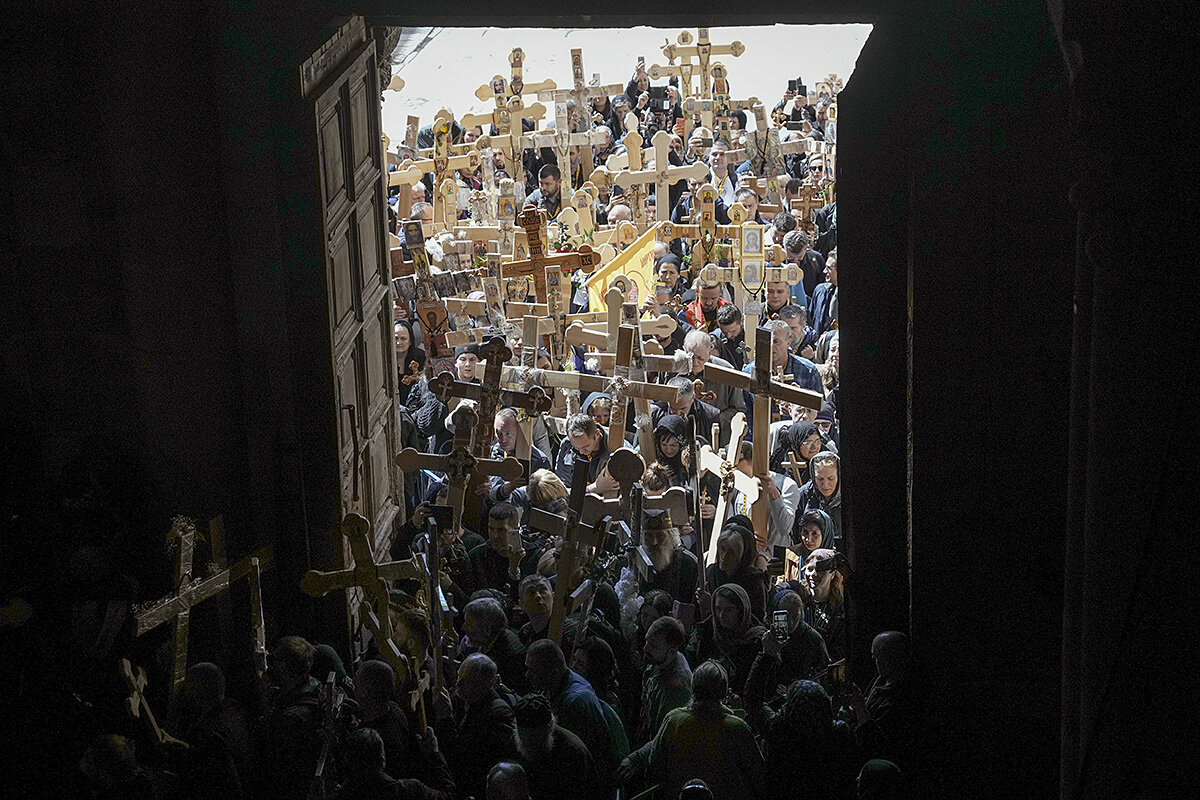
Christian churches and worshippers in Jerusalem say they are facing an unprecedented rise in attacks that are undermining their safety and upsetting a delicate harmony in a city that is home to dozens of communities and denominations. It comes as Israel faces a political crisis and a rise in Israeli-Palestinian violence, with rhetoric by far-right government ministers emboldening extremists.
Some fear the attacks belong to a wider campaign by Israeli extremists to make East Jerusalem unwelcoming to Palestinian Christians, furthering a long-term goal of claiming sacred lands. Many of the vandals are believed to come from West Bank settlements and to be ignorant of, or hostile to, interfaith coexistence in the Old City.
Rallying around Jerusalem’s Christians are Israeli Jews and nongovernmental organizations determined to protect the city’s diverse makeup and freedom of worship. Yet Christians say this support is no match for a growing culture of impunity encouraged by alleged government inaction and a lack of prosecutions.
“If there is no justice, there is no safety. If there is no safety, there is no freedom of worship,” says George, a Christian resident of Jerusalem’s Old City. “If there is no freedom of worship, what is our future as a community?”
Attacks undermine Jerusalem Christians’ sense of security
Visitors to Jerusalem this Easter season may have noticed some new additions in the Old City: security cameras on the Church of Flagellation, an iron gate at the Franciscans, protective barbed wire on the Armenian Monastery’s roof.
“This is not part of the Franciscan spirituality of welcoming,” noted Brother Francesco Patton, Vatican custodian, or Custos, of the Holy Land.
But Christian churches and worshippers in Jerusalem say they are facing an unprecedented rise in attacks that are upsetting a delicate balance of harmony in a city, revered by the three Abrahamic faiths, that is home to dozens of diverse communities and denominations.
It comes as Israel faces a domestic political crisis and a general rise in Israeli-Palestinian violence, with rhetoric by far-right government ministers fanning the flames of extremist violence.
Some fear the attacks belong to a wider campaign by Israeli extremists and settler groups to make East Jerusalem unwelcoming to Palestinian Christians and Armenians, furthering a long-term goal of claiming sacred lands.
Rallying around Jerusalem’s Christians are Israeli Jews and nongovernmental organizations determined to protect the city’s diverse makeup and freedom of worship.

Yet Christians say this support is no match for a growing culture of impunity among extremists encouraged by alleged government inaction and a lack of prosecutions.
“If there is no justice, there is no safety. If there is no safety, there is no freedom of worship,” says George, a Christian resident of the Old City. “If there is no freedom of worship, what is our future as a community?”
Vandalism and harassment
February and March saw what Church leaders describe as an “unprecedented” 10-day spate of vandalism at the Tomb of the Virgin Mary and the Church of the Flagellation, the Protestant Cemetery, and the Armenian Monastery.
The Israeli police, working closely with religious leaders, have made some initial arrests in connection with these incidents.
While the vandalism grabbed headlines, community and church leaders say there has been a parallel uptick in unpublicized acts of harassment and physical attacks – deepening a sense of unease.
“We have had unfortunate incidents and tensions in the Old City in the past,” says one shopkeeper near the Armenian Quarter, “but we have never had constant harassment interrupting our daily life like this.”

“The aggression against Christian holy places and symbols is not news, but the frequency and violence is something quite new,” said Latin Patriarch of Jerusalem Pierbattista Pizzaballa, the Vatican’s top representative in the city. He was speaking to reporters in one of several interviews with church leaders in the context of the Council of Patriarchs and Heads of Churches in Jerusalem’s “Protecting Holy Land Christians” campaign.
Church leaders have issued increasingly stern statements and letters to Israel’s government, which their authors say are ignored.
“At this moment, we believe that our statements are useless,” said Brother Patton, the Custos.
“We issue a statement, after one week there is another episode. We issue another statement, then a third episode. Then a third statement,” he said. “At the end we look at each other as heads of the churches and ask what is it necessary for us to do? Our statements are blowing in the wind.”
Israeli officials say the government includes multiple authorities working to ensure the safety of Christians and others in Jerusalem.

“The police are reacting very quickly because there are more cameras in the Old City. Whenever they can, they arrest suspects, sometimes on the spot,” says Tania Berg-Rafaeli, director of the World Religions Department at the Foreign Ministry. Recent arrests, she says, have “led to some indictments, which is something we didn’t have before.”
“The suspects committing acts against the Christians don’t represent anyone – they are marginal,” she adds.
Yet church leaders and their Israeli supporters challenge that, detecting clear ideological organization behind some of the attacks.
Many of the vandals are believed to come from West Bank settlements and to be ignorant of, or hostile to, interfaith coexistence in the Old City. Church leaders say they work with Jerusalem rabbis to stem the violence, but the Jewish religious leaders are stymied by the fact that in nearly every instance, the far-right agitators are not even from Jerusalem.
Church heads say many of these trouble-makers are inspired by – or take orders from – far right groups with a clear goal: to incite strife and mark the Old City as their own.
What’s more, says Greek Orthodox Patriarch Theophilis III, suspects often “go through the main door and go out the back door” of the Israeli justice system, and few are indicted. Perpetrators are often classified as suffering mental illness, says the Custos, thus avoiding prison.

“The accountability of settlers is something that hardly seems to be happening,” says Shai Gorem of Ir Amim, or “City of Nations,” an Israeli legal advocacy nonprofit that works to make Jerusalem a “more equitable and sustainable city for the Israelis and Palestinians who share it,” as their website puts it.
Yellow-vested Jewish Israeli volunteers from the Jerusalem Intercultural Center’s Window to Mount Zion initiative monitor Christian ceremonies in a bid to prevent far-right attacks.
But many incidents are now occurring at night, when priests and worshippers are heading to Mass or residents are walking home, when there are no foreign pilgrims, and when policing is light.
“People spitting on us or cursing us and calling us idol-worshippers during the day, those are ignorant young people who don’t know better,” says one Armenian community leader, “but these organized gangs who come at night are violent, and they are out to cause serious trouble.”
In one recent late-night incident, a gang of youths brawled with patrons at an Armenian cafe. In another, a priest was shoved and threatened with death. In yet another, a gang attempted to scale the Armenian Patriarchate to tear down the church’s flag and replace it with Israel’s. When Armenian youths attempted to chase the gang down the street toward an Israeli checkpoint, they say the agitators shouted “terrorists,” prompting the police to point their guns at the Armenians instead.

“Right now, we are completely vulnerable,” says an Armenian youth who witnessed one of the attacks and asked to withhold his name due to security concerns. “If we do anything to defend ourselves, all it takes is one word from the settlers to turn the police on us. Where do we turn?”
“The Armenian Monastery is the one place where I felt safe, no matter what was going on outside,” says one young Armenian woman. “Now I am afraid for my physical safety, even within its walls.”
Israeli government “absent”
Christian church leaders and community members accuse the government of inaction in the face of the violence that they say dates back a year.
Ms. Berg-Rafaeli, of the Foreign Ministry, expressed “surprise” at the allegations. “We react whenever we can,” she said. “Whatever they need, whenever they need it, they can ... talk to us directly.”
But church leaders say this is not enough, and that the government is abdicating its duty to keep the peace.
Church leaders say they have been frustrated by strained ties with six-time Prime Minister Benjamin Netanyahu, with whom they have a long working history and who in 2018 declared Israel as the “one place” in the Middle East where Christians are safe.
Yet they all see Mr. Netanyahu as being at the mercy of the increasingly autonomous far-right members of his coalition, whose rhetoric refers to Christians as “guests.”

“The prime minister is in a very difficult situation. He is not the man that we knew,” said Theophilis III. “Before he was the man who was the master who can control everything, but today it is the other way around.”
With far-right ministers and members of the coalition providing rhetorical support, Patriarch Pizzaballa says, “some extremists may feel freer to express their vision and to mark the territory.”
One Armenian community leader who served as a liaison between the community and Israeli police for 40 years describes a “complete breakdown” in ties and communication between the community and the government.
“We need to rebuild a good relationship with the Israeli government,” he said. “Right now, there is no relationship.”
Church and community leaders say they rely instead on the Israeli police and army, viewed as apolitical institutions that listen to their needs and prioritize communal peace and free access to places of worship.
This cooperation was on display on Palm Sunday, when police officers joked and shook hands with church leaders and worshippers as they guided thousands from the Mount of Olives down to the Old City’s Church of Saint Anne. Some 60,000 pilgrims came to Jerusalem during Holy Week without incident.

Yet prized real estate remains a flashpoint.
The Greek Orthodox Church owns 30% of the land within the walled Old City; it is the largest landlord, renting homes, shops, hotels, and restaurants to Palestinian residents. Jerusalem’s churches own large swathes of the Mount of Olives – revered by both Christians and Jews.
That ownership may come under threat, says Ir Amim’s Mr. Gorem, as messianic Jewish settler groups launch pressure campaigns, buy up land, and seek to expand national parks.
The Jerusalem Municipality has plans to expand the Western Wall Biblical Park to cover all the Mount of Olives.
“This is a small group of settlers turning the relations of Jews, Christians, and Muslims in Jerusalem into a living hell,” says Mr. Gorem. “Jerusalem has always had a delicate balance.”

‘Doing nothing isn’t working.’ Red states pressured on gun violence.
Although Southern and Midwestern states have resisted changes to gun policies, they’re looking for ways forward that show they’re responding to the violence touching more and more Americans.

- Quick Read
- Deep Read ( 6 Min. )
-
Noah Robertson Staff writer
After a string of high-profile shootings in recent weeks, Southern and Midwestern states, long champions of gun rights, have largely doubled down on these rights. But pressure is also growing to do something.
However modestly, support is building to reconsider gun safety legislation and increase support for mental wellness – a nod toward feelings among many Americans that government action is needed to help stem the waves of violence.
Expanding mental health services is one item, among others, that’s gaining renewed attention in these states. And following the shooting at Nashville’s Covenant School, Tennessee Gov. Bill Lee has called on lawmakers to pass what he termed an “order of protection law,” widely referred to as a red flag law, which allows authorities to temporarily seize weapons from people in crisis.
The path ahead is hardly straightforward, given how controversial it is to make any changes related to gun policy. But Carlos Arias, who was standing near Nashville’s Legislative Plaza during a protest, voices hope that differences can be bridged. When presented with a “gun control versus mental health funding” scenario, he says, “I think it’s a little bit of both. I think both parties – we can really meet in the middle.”
‘Doing nothing isn’t working.’ Red states pressured on gun violence.
After a string of high-profile shootings in the past few weeks, Southern and Midwestern states, long champions of gun rights, have largely doubled down on these rights. And for the most part, they’ve rejected national efforts to enact red flag laws, which allow authorities to temporarily seize weapons from people in crisis.
But amid this digging in, pressure is growing to do something. However modestly, support is building to reconsider gun safety legislation and increase support for mental wellness in communities – a nod toward feelings among many Americans that government action is needed to help stem the waves of violence touching rising numbers of citizens.
Expanding mental health services is one item, among others, that’s gaining renewed attention in these states. For some lawmakers, such a step is a way to respond to gun violence while steering clear of gun regulation.
“The modern South continues to think that low taxes and small government and personal responsibility are the key, but personal responsibility works for people who are whole and healthy,” says Cal Jillson, a political scientist at Southern Methodist University in Dallas. “People who are not whole and healthy need to have the arms of their family, their church, their community wrapped around them until they are.”
Among the developments in GOP-led states:
• Tennessee Gov. Bill Lee, who lost two family friends in the March 27 shooting at Nashville’s Covenant School, last week proposed a $200 million spending package aimed in part at boosting the numbers of mental health liaisons in schools. On Tuesday, the Republican governor signed an executive order strengthening background checks for gun purchases and called on lawmakers to pass what he termed an “order of protection law,” widely referred to as a red flag law.
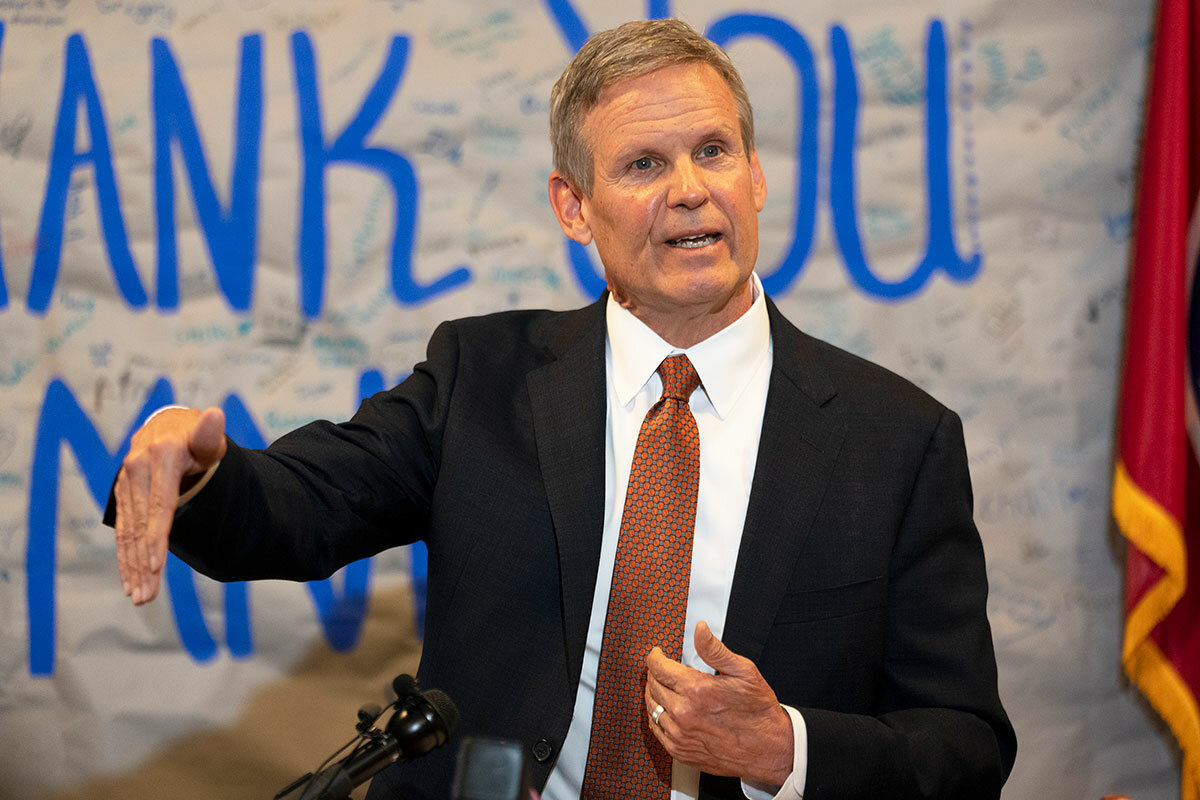
• In February, Indiana’s Senate unanimously passed a bill that would bolster the state’s ongoing mental health initiatives and its implementation of the federal 988 crisis response system. Last week, the legislation advanced unanimously out of the House Public Health Committee. Funding for the bill, however, is still under discussion.
• In the wake of a young shooter killing 19 children and two adults last year at a school in Uvalde, Texas, the state’s top GOP leaders have said they’re focusing on school safety. Last month, House Speaker Dade Phelan announced his support for several bills that take up the issue.
• A gun safety bill got a rare hearing last month in Georgia’s GOP-controlled legislature. Although the bill failed in a House public safety subcommittee, Democratic Rep. Michelle Au, who introduced the measure, still saw progress. “Gun safety legislation traditionally does not get heard in the Georgia state Legislature, so the fact of a hearing at all is a huge first step,” she said, according to the Georgia Recorder.
Clearly, these developments have not taken place on a straight path, with their course instead indicating how controversial it is to make any changes related to gun policy. What they’re up against is this nation’s uniquely strong gun rights culture, underscored this weekend by the National Rifle Association’s annual meeting, which is being held in Indianapolis.
Thought-provoking remarks
But still, Republican lawmakers across the South and Midwest are beginning to more seriously mull remarks from Jason W. Smith, who has treated victims of the shooting this week at a Louisville, Kentucky, bank. “Doing nothing ... is not working,” said Dr. Smith, of the University of Louisville Hospital, at a Tuesday news conference. The violence, he said, “is just getting out of hand across our city and across this great nation.”
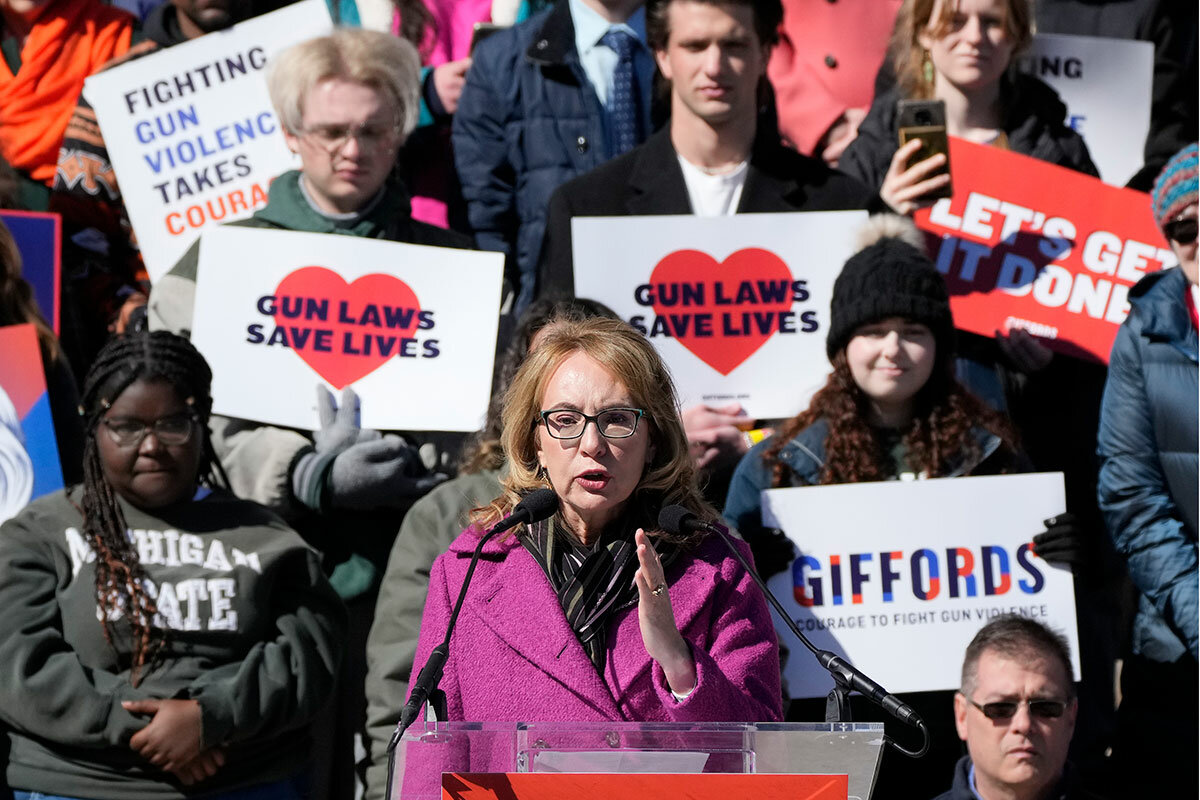
The first 100 days of 2023 have seen 15 mass killings in the United States – the highest number since 2009, according to a database maintained by The Associated Press and USA Today in partnership with Northeastern University. Another measure, by the Gun Violence Archive, also found a significant uptick: 146 mass shootings in 2023 as of April 10, compared with 130 by that time last year. The Gun Violence Archive defines a mass shooting as having a minimum of four victims who are either injured or killed; any shooter is not counted in this tally.
On the other hand, a seminal National Institute of Mental Health study found that only 4% of all violence in the U.S. can be linked to mental illness, thus calling into question the effectiveness of a laser focus on mental health to address gun violence. Yet at the same time, reports have emerged that both the Nashville and Louisville shooters were dealing with mental health issues.
“It’s no surprise that politicians sort of blame mental illness,” says Jeff Temple, director of the Center for Violence Prevention at the University of Texas Medical Branch at Galveston. “It’s a safe way to address the gun problem without talking about the real culprit.”
Red flag laws
Red flag laws have also been a topic of interest after the recent shootings, as they were after the shootings last May in Buffalo, New York; and Uvalde. Later that month Congress passed bipartisan legislation that included incentives for more states to pass red flag laws, but in the months following, no states took up that offer.
Currently 19 states, plus the District of Columbia, have red flag laws on the books. Florida, Virginia, Indiana, and Illinois are among the 19, and Florida has registered the most court-ordered gun surrenders since 2020 – more than 5,800, according to an AP analysis.
While Governor Lee of Tennessee has cracked open the door for a red flag law in his state, some constituents aren’t satisfied. This week, thousands of Tennesseans gathered outside Nashville’s city hall, some carrying signs demanding that “Bloody Gov. Bill Lee” resign.

For Qiana Naugles, a veteran Nashville teacher, focusing on mental wellness isn’t enough. “If you’re not trying to help get rid of guns, we don’t need to talk,” she says.
For Candice Amich, who works in the English department at Vanderbilt University, the push for mental health funding smacks of politics at a time when Americans are demanding action.
Yet Ms. Amich agrees that “gun violence reflects the larger social ills. ... So it’s not like the guns themselves are gods. They’re just the tools that are expressing massive social discontent and mental health illness.”
For some in the South and Midwest, the behavioral health issues that can come under the umbrella of mental health treatment are symbolic of a broader decay of faith and values. That may rankle others, but for those holding this view, it’s a central point.
“There is ... a real discussion ... around a changing American culture and the general honest belief that a God-fearing populace maybe doesn’t act the same as one that isn’t as anchored in faith,” says T.J. Litafik, a Kentucky-based political consultant who works for both Democrats and Republicans. “There’s absolute legitimacy to that, but there are ways to approach it that are more realistic than others ... and it’s hard to accomplish anything if you keep living in a big echo chamber.”
Carlos Arias, a record shop employee standing near Nashville’s Legislative Plaza during a protest, voices hope that the differences between people can be bridged. When presented with a “gun control versus mental health funding” scenario, he says, “I think it’s a little bit of both. I think both parties – we can really meet in the middle.”

Will Pentagon leak sour US relationship with allies?
The Pentagon leak has put sharp focus on both the strength of U.S. alliances and the fragility of relationships that need constant tending – especially in an era of disinformation.

- Quick Read
- Deep Read ( 6 Min. )
-
Ann Scott Tyson Staff writer
The leak of classified Pentagon documents that became public last week has put a spotlight on the United States’ relationship with American allies, featured extensively in the intelligence.
For U.S. partners, the trove poses a pair of challenges. First, it raises questions about just how secure the much-vaunted U.S. intelligence system really is. And second, it threatens the solidarity of democratic governments as they attempt to hold together against autocratic and nationalist forces during a testing historical period – particularly the war in Ukraine.
“There’s a greater cause at the moment which makes this sort of intelligence breach less dramatic than past breaches,” says Liana Fix, a fellow for Europe at the Council on Foreign Relations, “and that’s the context of the war.”
South Korea was thrust into an awkward spotlight by the leaked Pentagon documents. They also revealed U.S. operational interests in Ukraine, including the use of a satellite-based imaging technology that could now be more susceptible to interference from Russians.
Ultimately though, pragmatism will likely keep the status quo intact, experts say. “The allies benefit enormously from America’s intelligence capability and that tempers any outrage and leads to a more balanced response when these things come out,” says James Davis, a professor of international politics.
Will Pentagon leak sour US relationship with allies?

When the leak of classified Pentagon documents came to public light last week, the controversy was as much about who they informed on as what details they contained.
While some of the material in the papers focuses on American geopolitical rivals like Russia, such as the magnitude of its losses in its invasion of Ukraine, other portions of the trove detail information about key U.S. allies like South Korea, Israel, and Ukraine.
It is not the first time U.S. intelligence has been caught spying on its partners. Just a decade ago, a WikiLeaks report showed extensive American hacking of phones in Europe, including that of Angela Merkel, infuriating and embarrassing the German chancellor.
But the leak poses a pair of challenges for U.S. allies. First, it raises questions about just how secure the much-vaunted U.S. intelligence system – which many American allies rely on – really is. And second, it threatens the solidarity of democratic governments as they attempt to hold together against autocratic and nationalist forces during a testing historical period – one all the more challenging due to the largest land war since World War II.
“There’s a greater cause at the moment which makes this sort of intelligence breach less dramatic than past breaches,” says Liana Fix, a fellow for Europe at the Council on Foreign Relations, “and that’s the context of the war.”
“A pretty inconvenient moment”
Trust in American intelligence and in relationships with the United States was enjoying highs following Russia’s invasion of Ukraine and Donald Trump’s departure from the White House.
The number of Germans viewing the U.S. relationship in a positive way quadrupled in the last two years to 82% according to Pew Research, with a roughly equal proportion of Americans feeling similarly about the U.S.-German relationship. The same goes for U.S. allies in Asia: An early 2022 poll found that 87% of South Koreans believe their country should have closer ties to the U.S. than to any other nation.
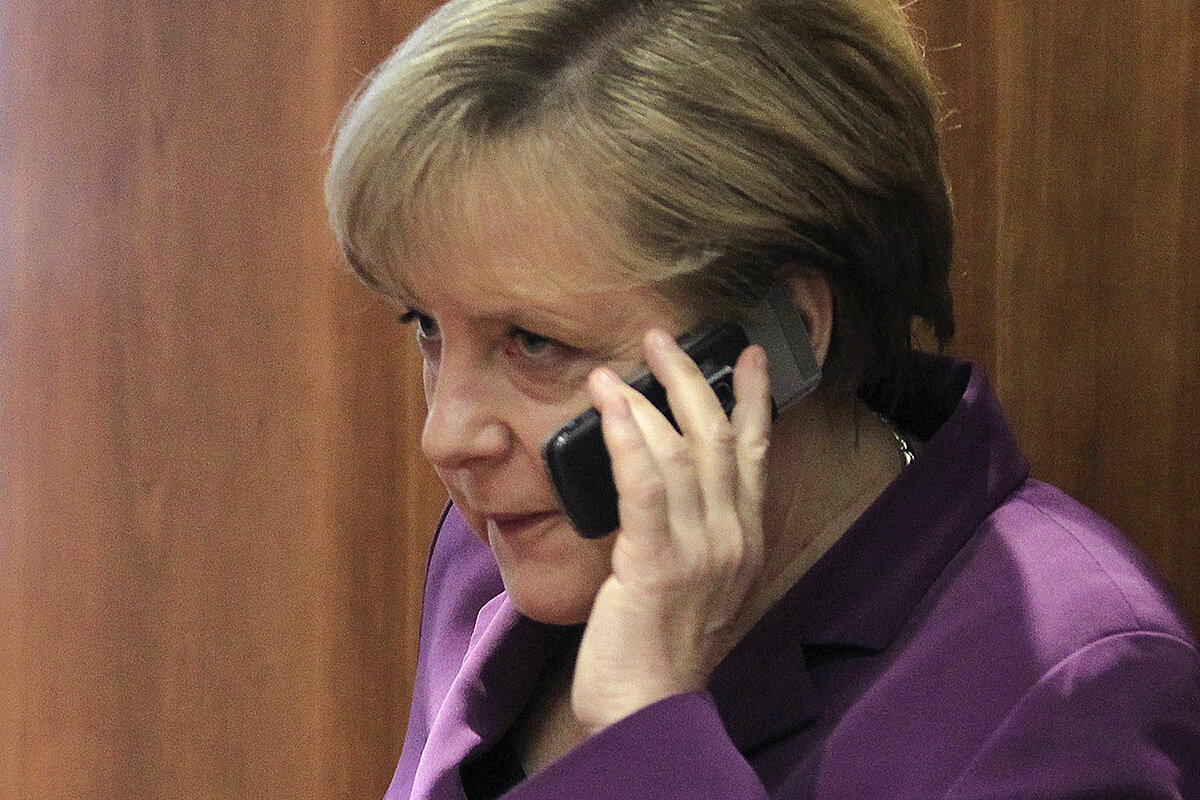
Positive public sentiment in such countries toward the U.S. should help buffer the news that America has been an imperfect partner when it comes to protecting secrets. It’s also not news that allies spy on each other.
“It’s fairly established that mutual spying is done rather regularly on many levels,” says Ian Lesser, executive director of German-Marshall Fund’s Brussels office. “But it always holds the potential to create enormous policy challenges for governments because there is this disconnect between insider official perceptions on the issue and its effect on public opinion.”
In 2013, for example, the Edward Snowden leaks revealed that the National Security Agency had been listening in on Chancellor Merkel and other top German and European officials. That revelation prompted Germany to call in the U.S. ambassador and seek out an apology and reassurances that such activity wouldn’t continue, while Ms. Merkel proclaimed, “We need to have trust in our allies and partners, and this trust must now be established once again.”
The Five Eyes alliance of the U.S., Canada, Australia, New Zealand, and the United Kingdom have agreed they won’t spy on each other, but otherwise there’s no accepted international standard on the activity.
This time around, one of Washington’s most important allies in Asia – South Korea – was thrust into an awkward spotlight by the leaked Pentagon documents.
The documents allegedly disclosed concerns voiced by senior South Korean national security officials that by providing artillery shells to the U.S. – if diverted to Ukraine – South Korea could violate policies that bar it from providing lethal munitions to countries engaged in conflicts.
The revelations stirred controversy as South Korean President Yoon Suk Yeol is scheduled to make a state visit to Washington on April 26, including a White House dinner hosted by President Joe Biden, to celebrate the 70th anniversary of the U.S.-Republic of Korea alliance.
“Obviously it comes at a pretty inconvenient moment,” says Daniel Sneider, an expert on U.S.-ROK ties and lecturer in East Asian Studies at Stanford University. Opposition politicians are using the incident to attack Mr. Yoon as being obsequious toward the Americans, he says. “The Yoon administration and the Biden administration, they’re doing their best to carry out damage control.”
Yet aside from needing to manage public opinion, experts say they see little harm from the leaked information itself to the alliance with South Korea. “The content of what was discussed in itself has very little intel value,” says retired South Korean Army Lt. Gen. In-Bum Chun, former deputy Chief of Staff of the ROK/U.S. Combined Forces Command. The policy discussions over Seoul possibly providing weapons to a war zone were an open secret, he and other experts said.
Endangering individuals, revealing sources
But there will be acute concern that the U.S. is unable to protect its sources, as the details of what was leaked could reveal identities of people who share information with the Pentagon.
Such sources could be hauled before their governments and made to answer for their actions. In countries like Egypt – which according to the documents was pondering supplying weapons to Russia – sources may disappear, says James Davis, professor of international politics at the University of St. Gallen in Switzerland.
“That creates a bigger problem, as it does make it more difficult for individuals to cooperate with our intelligence services,” says Dr. Davis.
This information also reveals operational interests in an ongoing war. “What does it tell adversaries about how we gather information? That’s always the real concern – it’s not just the information itself but who’s gathering it, who’s helping, and who’s not helping,” says Dr. Lesser of the German Marshall Fund.
The leaks also make reference to “LAPIS time-series video,” a satellite-based imaging technology that could now be more susceptible to interference from Russians.
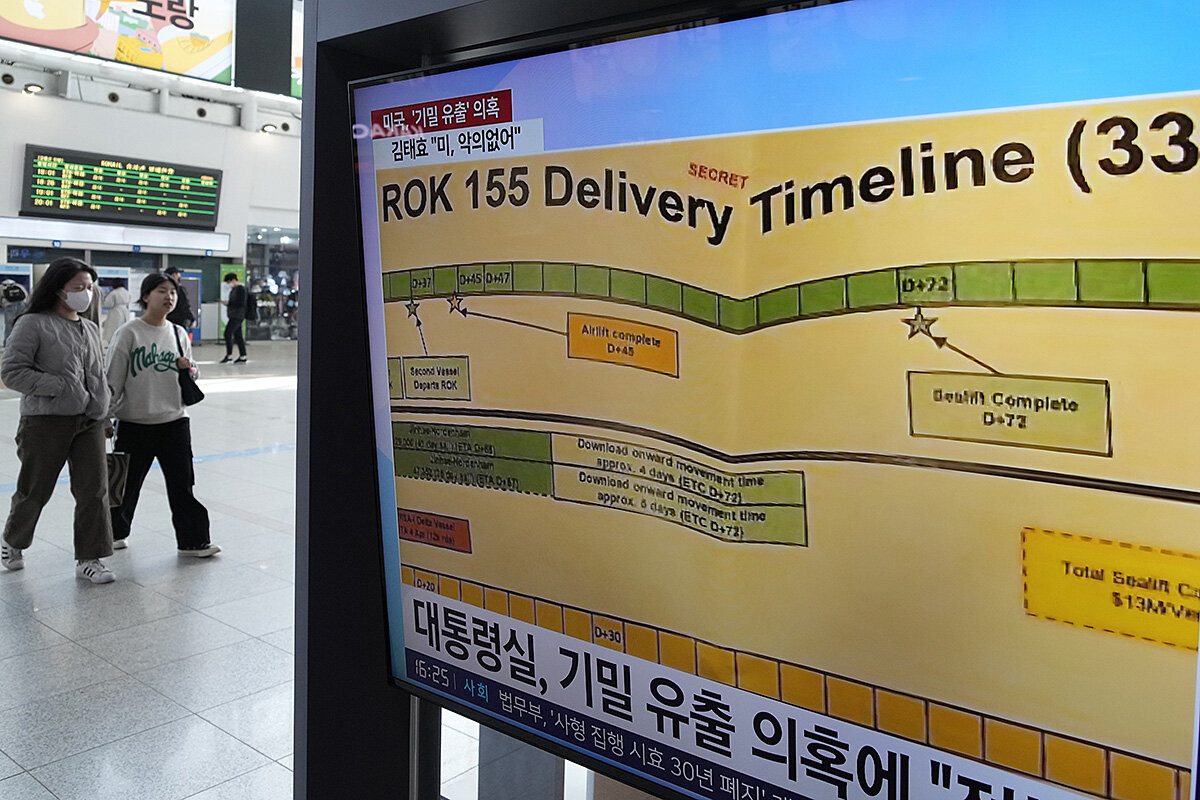
Outrage will be tempered
In the end, the U.S. and its allies will continue to share intelligence, defense experts predict.
After all, information sharing is sorely needed among allies at this critical time, and U.S. intelligence in particular has proven valuable. In February 2022, Germany was blindsided by Russian President Vladimir Putin’s armies marching into Ukraine, with the head of the German foreign intelligence service famously needing to be evacuated overland by special forces when Ukraine’s airspace was shut down. “He didn’t expect the war to actually break out on that day,” says Dr. Fix, the Council on Foreign Relations fellow.
In other instances, terrorist cells planning attacks in Germany have been identified by U.S. intelligence. “The allies benefit enormously from America’s intelligence capability and that tempers any outrage and leads to a more balanced response when these things come out,” says Dr. Davis, the international politics expert.
Meanwhile, South Korea is a crucial strategic and economic ally of the United States in Asia. The two countries have a mutual defense treaty, and some 28,500 U.S. troops are based in South Korea. In 2022, South Korea was the United States’ seventh-largest trading partner.
“The manifold security challenges ... actually call for strengthening, not cutting back on, intelligence-sharing” between the allies, says Rachel Minyoung Lee, senior analyst for the Open Nuclear Network in Vienna and a former North Korea analyst for the U.S. government.
“For the Yoon administration, a strong U.S.-South Korea alliance forms the cornerstone of its foreign policy. Keen to expand and strengthen U.S. extended deterrence, ... it will try to minimize fallout from this incident.”
Ultimately, it is clear there are “massive numbers” of both classified documents and people with clearances. “The system as a whole has to be rethought,” says Dr. Davis.
“If we were only classifying the really secret stuff and making sure the people who had access to the really secret stuff were trustworthy, we’d probably have far fewer events.”

From civil wars to gangs: Central America seeks healing
Homicides have decreased across Central America in recent years, but healing society is about more than just reducing murders.
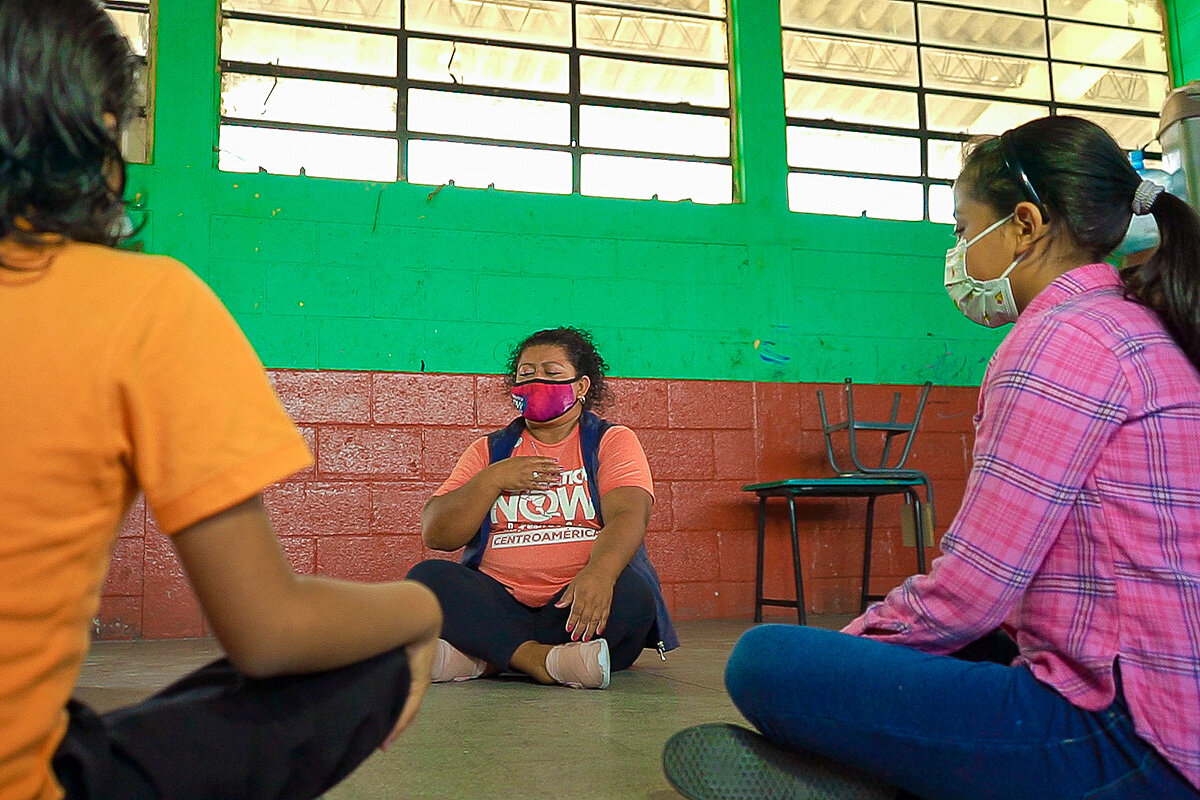
- Quick Read
- Deep Read ( 6 Min. )
-
By Anna-Catherine Brigida Contributor
Civil society and regional governments, looking back at the end of the civil wars that devastated Central America in the 1980s, have noted a collective failure to discuss and treat trauma at the time. Some see direct links to the violence that overwhelms their communities today. Although homicide rates have started to fall in recent years, in part thanks to improved policing and controversial negotiations with gangs, progress on delivering mental health services has lagged.
Today, local and international organizations are increasingly trying to incorporate mental health care into their work. Teachers, police officers, lawyers, and medical professionals – all considered “first responders” who often come into contact with victims of violence – are starting to ask tough questions. What impact have years of violence left on society? What would it take for people to actually feel safe in Central America? How can I be part of this solution?
“We’re not [used to] addressing trauma and mental health as a root cause of violence and understanding it as a key strategy to preventing the perpetuation of violence,” says Celina de Sola, from the organization Salvadoran Glasswing, which runs mental health first-aid trainings.
Investing in mental health is an “opportunity to ... really prevent these patterns of violence.”
From civil wars to gangs: Central America seeks healing
Lizeth, an emergency room nurse at a major public hospital here, doesn’t flinch when she attends victims of violence. But her medical training did not include how to confront patient tears or silence or fear.
“Don’t worry, it will all be over soon,” she says she used to tell patients dismissively, thinking it helped them get through a tough moment. But after undergoing a mental health training for professionals steeped in violence and trauma, organized by a nongovernmental organization here, she’s changed her approach. Now she offers breathing exercises, tries to create a safe environment, and builds trust through listening.
Lizeth, who asked to use only her first name for security reasons, is joining a growing number of professionals reshaping mental health in a country still reeling from civil-war era trauma and dealing with more than a decade of widespread gang warfare.
Homicides have decreased across Central America in recent years, in part thanks to improved policing and justice systems and controversial negotiations with gangs. But progress in mental health services has lagged – and without it, many say, these security gains could be short lived, given the link between trauma and violence.
Local and international organizations are increasingly incorporating mental health care and trauma response into their work. Teachers, police officers, lawyers, and medical professionals like Lizeth are asking tough questions about trauma in their day-to-day work. What impact have years of violence left on society? What would it take for people to actually feel safe in Central America? How can I be part of this solution?
“We’re not [used to] addressing trauma and mental health as a root cause of violence and understanding it as a key strategy to preventing the perpetuation of violence,” says Celina de Sola, co-founder and president of Salvadoran Glasswing, an NGO which runs mental health first-aid trainings like the one Lizeth joined in 2021.
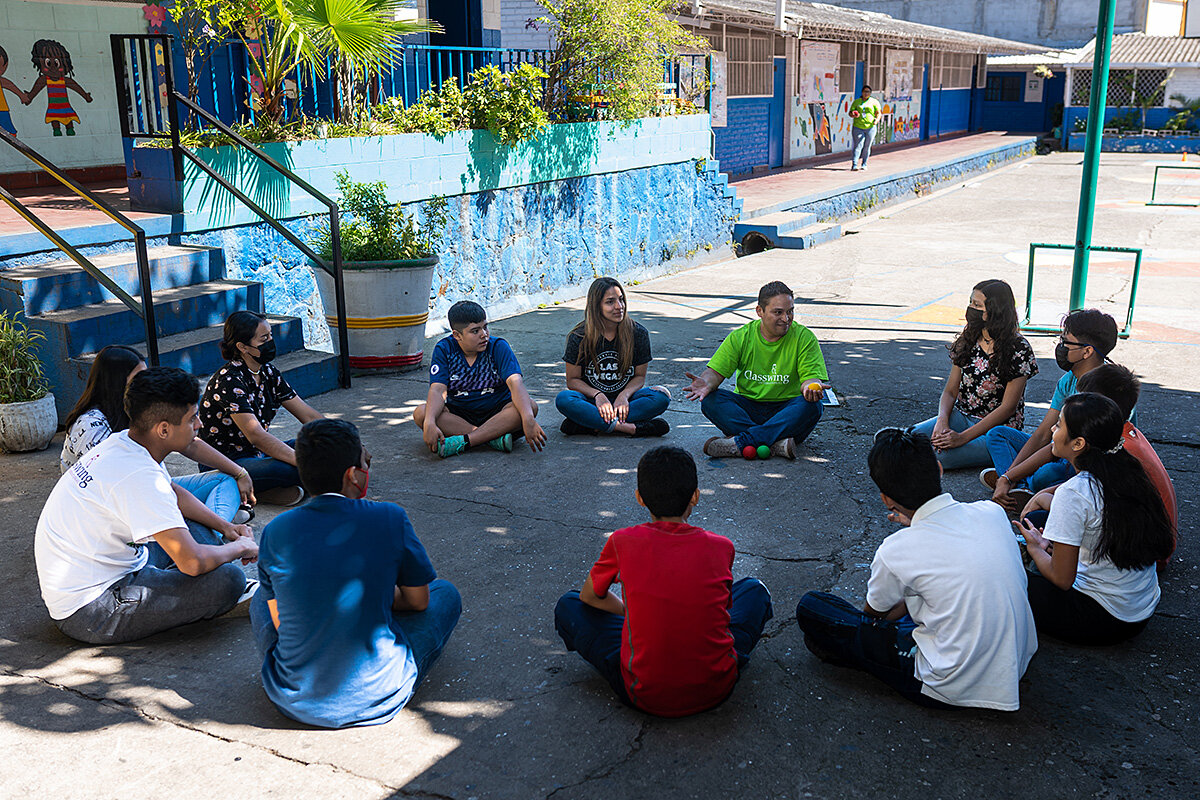
“If you are exposed to violence, you’re more likely to either be revictimized or potentially perpetrate violence,” Ms. De Sola says. Investing in mental health is an “opportunity to…really prevent these patterns of violence.”
A long history
Civil society, community leaders, and regional governments, looking back at the end of the civil wars that devastated Central America in the 1980s, have noted a collective failure to discuss and treat trauma at the time. Some see direct links to the violence that overwhelms their communities today.
Poor mental health can manifest itself as difficulty interacting with others, problems concentrating at school, and trouble finding or succeeding at a job, says Tobias Hecker, a clinical psychologist at Bielefeld University, in Germany. It’s not often the outcome of one single event, but when challenges are ignored, “people cannot achieve many things in their daily lives,” Dr. Hecker says.
At an expansive clinic in Santiago de Maria, Usulutan, in eastern El Salvador, patients wait in chairs lined in neat rows for their turn to see doctors. The clinic opened in 2001 following an earthquake that devastated the area, and the town was a hotspot during the country’s 12-year civil war. Many patients are former combatants or had a relative killed or disappeared during that time. Despite these dark memories, past violence is not frequently discussed.
Aníbal Quijano, the medical director, says many patients come with physical ailments. But doctors are trained to dig deeper in order to understand if these could be related to past stress, such as the war or gang violence.
“We can’t neglect that a human being’s emotional, psychological, and mental needs have to be addressed,” Dr. Quijano says.
The clinic, run by U.S. nonprofit Americares, believes doctors must understand the patient’s full history to properly provide care: treating physical symptoms may be of limited value if the emotional distress isn’t addressed.
When the pandemic hit, this understanding of trauma’s role – past and present – led the organization to launch teletherapy, serving nearly 2,200 patients in the first seven months.
Breaking the cycle
Elubia Velasquez, a teacher in her late 40s in Villa Nueva, Guatemala, has lived through cycles of violence. She was sexually abused as a child, and her parents were “physically, verbally, and psychologically abusive,” she says. Guatemala’s 36-year civil war, which ended in 1996, served as the backdrop to her youth.
As an adult, the violence in her community evolved, and a new kind of fighting took over — criminal gangs went to war with each other for territorial control. In the early 2000s, up to 10 murders occurred per day in her community.
One afternoon is etched in her memory: Gunfire broke out near school and she and her students took cover. Suddenly, two brothers sprinted from their hiding place, and she followed them.
Across the street, she could see the boys’ mother had been shot. “When I heard the kids’ cries, I went up to them and hugged them,” she says.
Back then, Ms. Velasquez had no training to help support people experiencing such acute pain. She just followed her instincts.
She wanted her students to see a psychologist, but like many victims of violence in Central America, their family quickly fled. They could be killed if the murderer thought the kids could identify him or her.
A few years later, in 2017, something clicked for Ms. Velasquez. Her school received three weeks of training in psychological first aid from Glasswing. It’s a 4-hour-per-week program that works with first responders – defined broadly as anyone coming into contact with someone who may be traumatized – in helping people through the first moments of a distressing experience. It focuses on creating a safe environment and establishing calm.
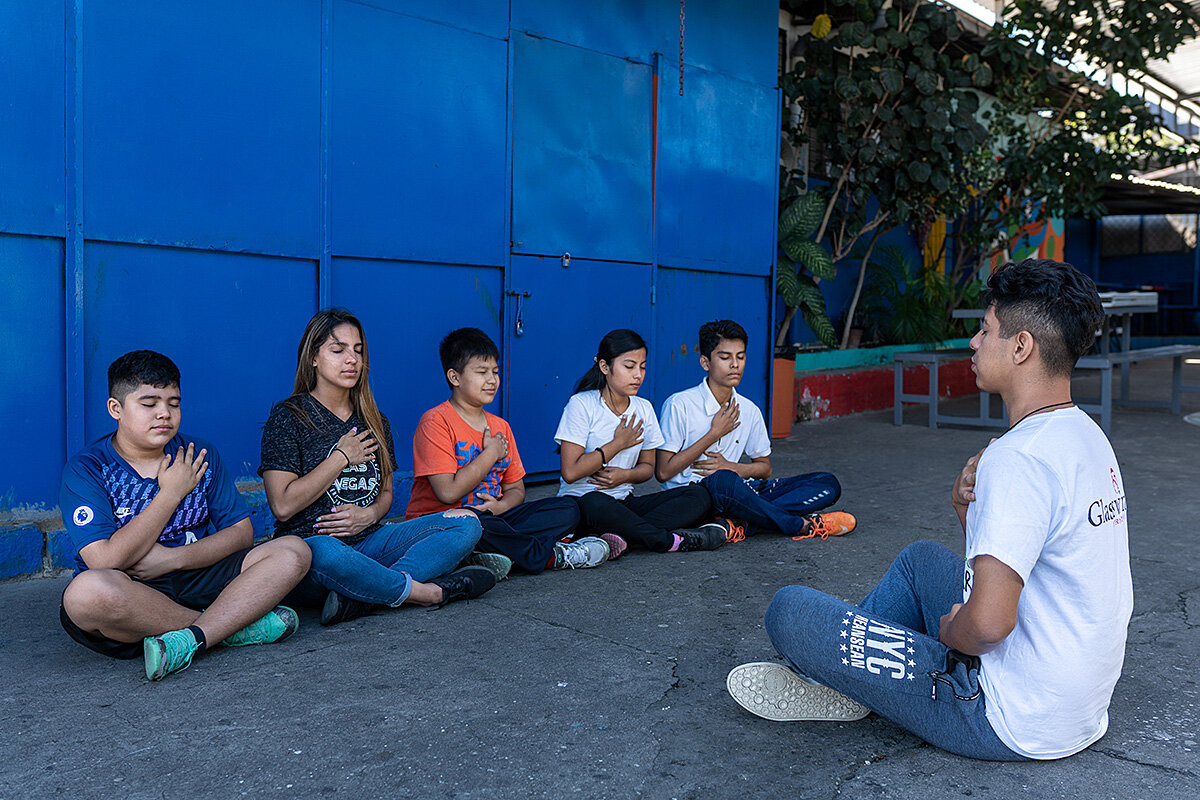
Helping people feel safe during and after a traumatic event can reduce the chances of post-traumatic stress disorder, research shows.
“Now what I do is more intentional,” says Ms. Velasquez, who recently put her skills into action. She approached the father of an adolescent gunshot victim when he practically collapsed after seeing his child’s dead body.
Ms. Velasquez was stunned to see the victim was one of her students. “But I said to myself, ‘This is where I need to implement the protocol I’ve been taught.’”
She helped the father tell his wife what had happened and worked to calm him down through breathing exercises.
In 2022, Glasswing received a $42 million grant from the Audacious Project, a nonprofit affiliated with TED. The support will allow it to expand its mental health programs over five years across El Salvador, Guatemala, and Honduras, potentially reaching up to 9.7 million people each year.
Help for the helpers
Attending to emotional wounds isn’t limited to traditional mental health care. Impunity is sky high in Central America, where fewer than 10% of femicides are solved in El Salvador and Honduras, and fewer than 30% in Guatemala.
Merary Avila, a Honduran lawyer, says the women she represents often don’t feel safe until their abusers are behind bars. One of her clients attempted suicide three times while fighting for more than a decade for her rapist’s conviction.
When the court declared him guilty, she transformed, says Ms. Avila. “She had a different light in her eyes.”
And it’s increasingly understood that those whose work involves helping traumatized individuals need support.
“Sometimes people forget that doctors can leave the hospital and go home to the same community where there is violence, and they have to keep functioning as a caregiver,” says Nadia Guevara, a psychologist with the International Red Cross in El Salvador, which in 2018 began training doctors, nurses, and psychologists to manage their own stress.
“It’s hard for a victim to attend to another victim,” she says.
Despite growing awareness of the links between trauma and violence, government funding is scarce.
El Salvador created a public mental health unit in 2018, but experts say more attention is key. It dedicates 1.1% of its budget to mental health care, while Guatemala and Honduras allocate less than 1% and 2%, respectively.
Despite the challenges, there’s reason for optimism: The foundation is being laid and strengthened for better understanding the role of mental health care, says Ms. De Sola, from Glasswing.
“We’re all trying to figure this out together.”
– Reporting for this story was supported by the Alicia Patterson Foundation.

What is art? A bakery stands up for its muffin mural.
Where is the line between art and advertising? A New Hampshire bakery’s mural has inspired a debate among the residents of Conway about private property and public art.
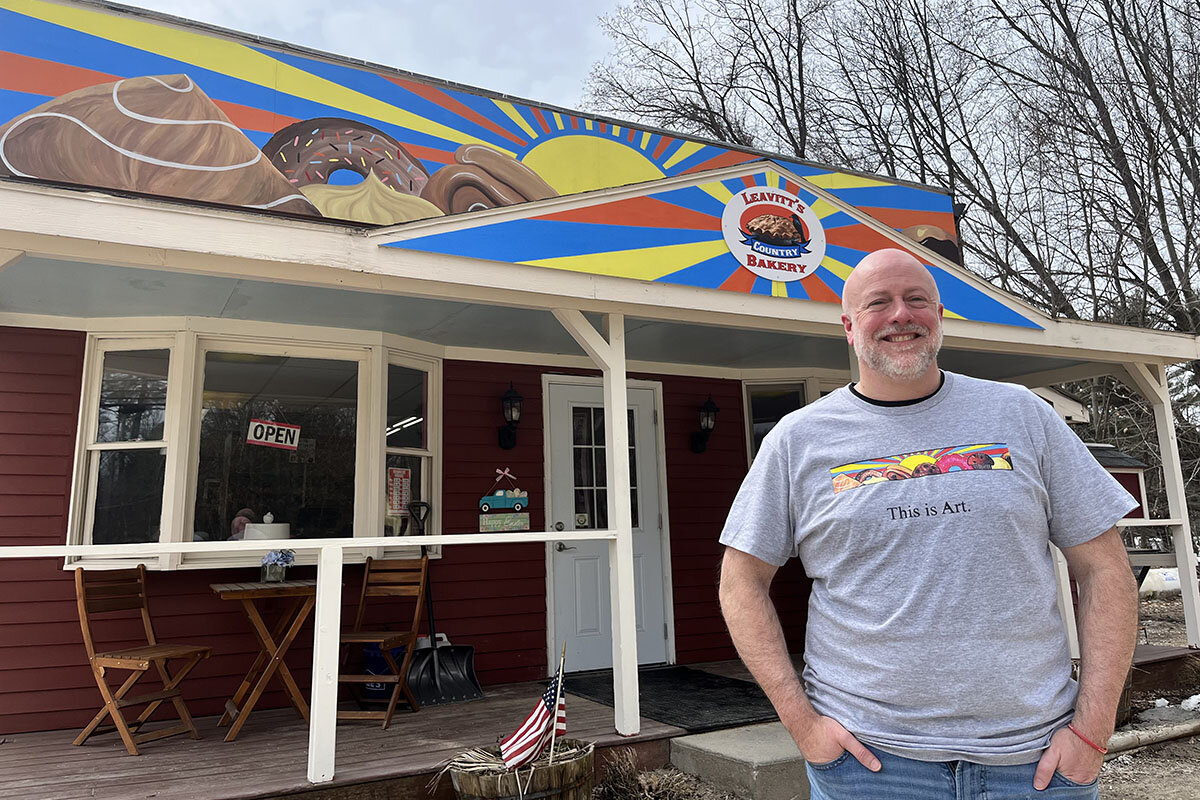
- Quick Read
- Deep Read ( 6 Min. )
When Sean Young offered up the wall of his bakery as a canvas for the high school art class, he didn’t think much of it. Three students went to work, creating a colorful mural of the sun rising over the White Mountains, depicted as muffins and doughnuts. He and his staff at Leavitt’s Country Bakery loved it, and so did customers.
The town of Conway, New Hampshire, however, did not, citing the bakery. Mr. Young’s application for a variance was denied, and the libertarian Institute for Justice picked up his case.
A classic New England town hall debate ensued – one about free speech, private property, and local governance. It’s a question of when art becomes advertisement. And on April 11, citizens voted 788-736 against a proposed change to the sign ordinance that would have incorporated murals and works of art.
To Mark Hounsell, a 12th-generation New Hampshire native, this debate is a uniquely New Hampshire one about self-determination.
“This is how you do it, this is how you live free,” he says, invoking the state’s motto. “You confront the issue of the day from an honest, transparent position and you welcome the debate. ... The more we can talk, the better we’ll see a way clear to do the right thing.”
“Being an American is an action verb,” he says. “You can’t be free if you can’t govern yourself.”
What is art? A bakery stands up for its muffin mural.
When Sean Young offered up the wall of his bakery as a canvas for the art class at the local high school, he didn’t think much of it. Three students went to work, creating a colorful mural of the sun rising over the White Mountains, depicted as muffins and doughnuts. Mr. Young loved it, he says. His staff at Leavitt’s Country Bakery loved it, and customers loved it.
The town of Conway, New Hampshire, however, did not. The painting was cited by the town code enforcement officer in June 2022 for violating the sign ordinance for its size. The painting depicts baked goods, which opponents say makes it not art – which is protected by free speech – but advertisement.
Mr. Young’s application for a variance was denied, and a Virginia-based law firm, the Institute for Justice, picked up his case.
A classic New England town hall debate ensued – one about free speech, private property, and local governance. Locals flocked to attend meetings for both the Zoning Board of Adjustment and the Planning Board to voice their views on the mural, or sign. It’s a question of when art becomes advertisement. And on April 11, citizens voted 788-736 against a proposed change to the sign ordinance that would have incorporated murals and works of art.
There’s no clear division between art and advertisement, says Michele Bogart, professor emeritus at Stony Brook University. (Take, for example, Andy Warhol’s Campbell Soup canvases.)
“[Leavitt’s] is a very interesting, complicated case about taste and property rights and ... an interpretation that this is advertising versus a case of it being community art,” says Dr. Bogart, whose specialties include the social history of public art.
It’s not the object of public art that matters in the end as much as the process of making it and who that involves. “It’s not simply what the work looks like. It’s what it embodies,” she says.
Since fighting for the right to display what Mr. Young maintains is a mural, Leavitt’s has become an advocate for the arts. The bakery recently began selling T-shirts with the mural on the front above the words “this is art,” and the Leavitt’s sign on the back with, “this is a sign.” Proceeds benefit the Kennett High School art department. And with the help of a local philanthropist, Leavitt’s is co-sponsoring a scholarship for one student a year from Kennett High who wants to pursue the arts.
“I’m not taking it down because it’s the kids’ artwork,” Mr. Young says.
For now, the painting stays. As long as the town interprets its sign ordinance in a way that outlaws the painting, the Institute for Justice plans to move forward with its federal case against the town on Mr. Young's behalf.
The town stands by its decision to cite the bakery, says town manager John Eastman. “The ordinance is lawful, and it is based on size, not content.”
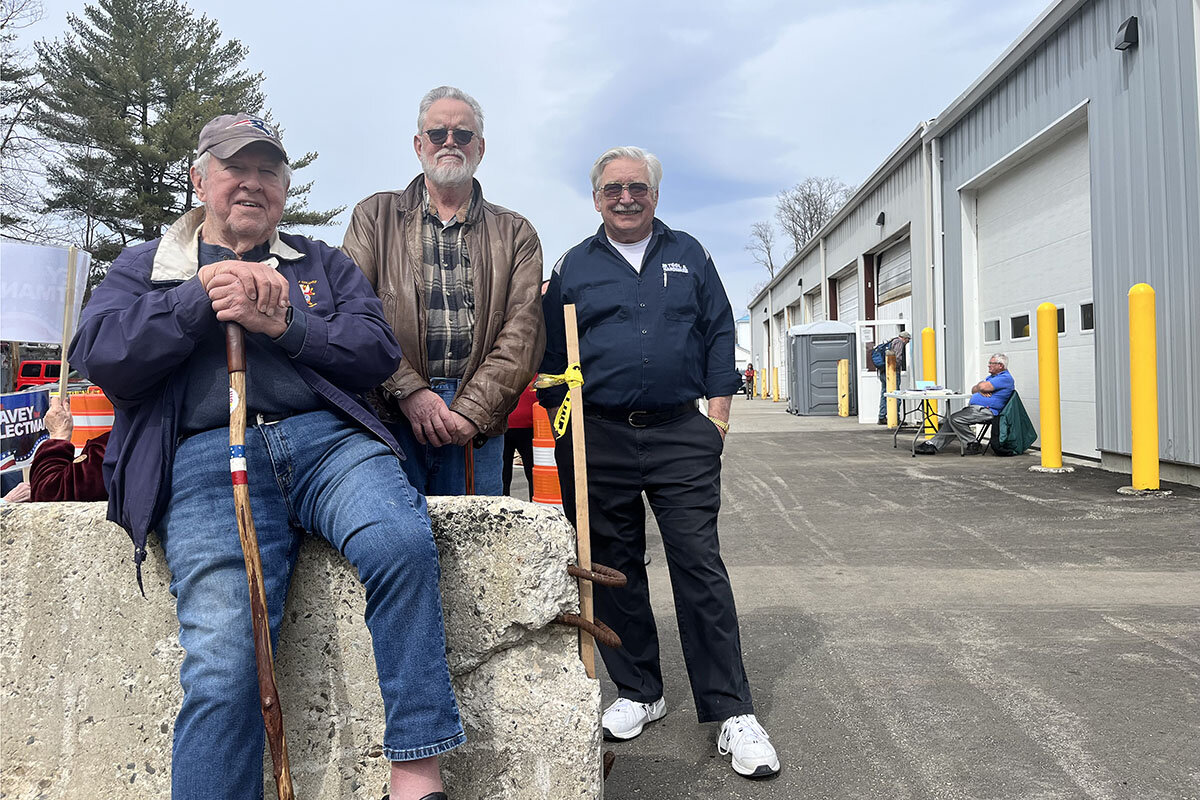
If locals don’t like the ordinance, he says, they should submit a petition to change it – as was on the ballot. “The ordinance was voted in by the people. [Government] didn’t just arbitrarily make this up to hurt people.”
Although the town says its enforcement is now based on size, not content, Leavitt’s and the Institute for Justice maintain the opposite, saying the town’s focus was at first on content. “Mr. Hebert asked if the town’s position was solely on the graphic of the donuts and the muffins. Mr. Gibbs answered in the affirmative,” read the minutes from an Aug. 17 meeting, reflecting an exchange between a member of the board and the code enforcement officer.
Mr. Young bought Leavitt’s a year ago from the original owners. A local fixture famed for its hand-cut doughnuts, lines go out the door in peak season and employees have memorized the orders of regulars.
Public art is important for many reasons, not least of which is that it creates a sense of place, says Boston-based muralist Caleb Neelon. “It’s like remembering the color of your kitchen when you’re growing up,” says Mr. Neelon. “It’s going to be something that means home.”
Luminaries like Banksy or Diego Rivera aside, there are two general types of public art, says Mr. Neelon. There are the projects that receive funding and go through a public approval process (think: the much-debated Martin Luther King Jr. and Coretta Scott King memorial in Boston), and there is the grassroots type, which is often a property owner offering up a wall as Leavitt’s did.
The latter type “tends to be something where people like seeing them and they are fun, a little bit contagious in the sense that people like to paint big and it’s fun to do,” he says.
Emma Gallant, one of the students who painted the mural, is a junior at Kennett High and now works at Leavitt’s.
“I’ve always really loved art. It’s something that I plan on doing throughout my life, even after I graduate,” says Emma. “When my art teacher told me that we had an opportunity within the community to paint a big piece for a local bakery, I got really excited.”
The students weren’t told what to paint, Emma says. The three of them came up with the concept after a week of brainstorming. So the debate over whether to remove the mural “kind of hurts,” she says. “I wish art could just be art.”
A mother of three, Autumn Santagata says she is concerned about the impact the pandemic had on students’ mental health. She sees the mural as the type of action that should be supported – “let’s keep them on the right path.”
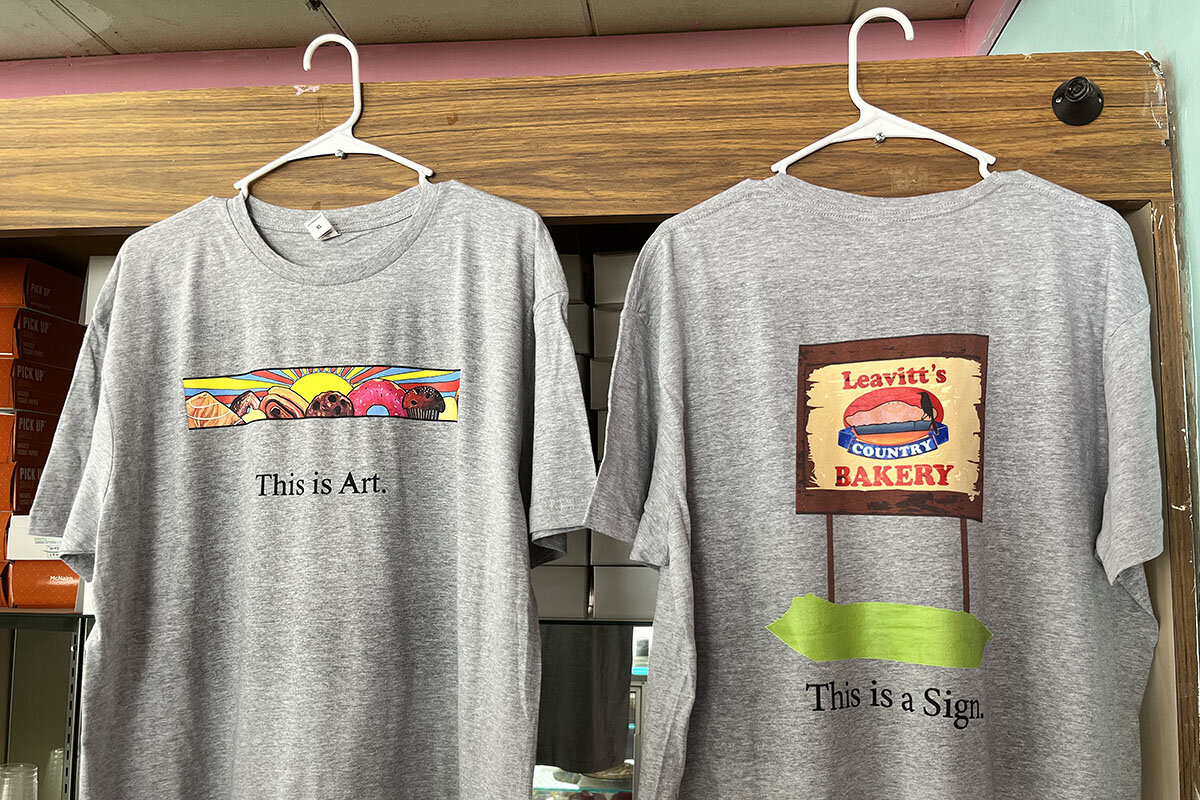
“We should lift them up,” not tear them down, says the bakery employee.
Many Conway voters walking into the town’s polling place Tuesday say they are fans of the painting. Others, however, feel the ordinance is fair and that Leavitt’s should comply.
Mark Hounsell, a member of the planning board who voted in favor of the proposed change, was debating with Carl Thibodeau, a member of the board of selectmen.
The ordinance as it stands is not enforceable, says Mr. Hounsell. The selectmen can suspend enforcement if they believe something is unjust, he says, and he believes they should have done so.
Mr. Thibodeau agrees that the sign ordinance needs to be rewritten, but the changes suggested were “too ambiguous.”
“The other side of it is that if they start putting up these giant murals all over town, and if you can’t call them a sign, then you can’t stop them, and I don’t know that anybody wants that,” he says.
“No,” agrees Mr. Hounsell, “but I don’t think anybody wants what we have.”
Most Conway residents are happy to talk about the bakery. “I love the mural,” says Jeanne Twehous, a nurse at the high school. “I don’t see any downsides to it, and I’m still not sure why it became an issue.”
“Personally, I think it’s not a sign,” says Dino Scaletti, who has split most of his adult life between Conway and Maryland, where he worked for the Nuclear Regulatory Commission. “Whether he makes bagels or doughnuts doesn’t make any difference to me.”
Deborah Fauver, a retired lawyer, is more conflicted. “It’s a tough problem,” she says, saying that while she likes Leavitt’s mural, specifically, she is concerned about enabling billboards.
This is about the freedom to display art, though, says Betsy Sanz, an attorney for the libertarian Institute for Justice, the firm representing Mr. Young. “Art is expression that is protected.”
“Under the First Amendment, a government can’t regulate content,” says Ms. Sanz. “We don’t think that five people on the zoning board are the ultimate arbiters of art and expression.”
To Mr. Hounsell, a 12th-generation New Hampshire native, this town debate over what qualifies as an art is a uniquely New Hampshire, uniquely American story about self-determination.
“This is how you do it, this is how you live free,” he says, invoking the state’s motto. “You confront the issue of the day from an honest, transparent position and you welcome the debate. And it’s not about agreement, it’s about engagement. The more we can talk, the better we’ll see a way clear to do the right thing.”
“This is how government works. Being an American is an action verb,” he says. “You can’t be free if you can’t govern yourself.”
Other headline stories we’re watching
(Get live updates throughout the day.)The Monitor's View
The worst of war violence versus the best of humanity
- Quick Read
- Deep Read ( 2 Min. )
-
By the Monitor's Editorial Board
Russia and Ukraine rarely agree on much these days. Yet this week, after the release of two videos on social media that appeared to show Russian forces had beheaded three captured Ukrainian soldiers, the two countries seemed to find common moral ground. Each launched an investigation of the videos.
The Kremlin said they were “awful.” Russia’s Prosecutor General’s Office promised to verify their authenticity and then “make an appropriate decision.” Ukraine called on the International Criminal Court to investigate and opened its own war crimes probe.
The gruesome nature of decapitation – a brutality associated more with terrorist groups – may account for Russia’s apparent concern. The videos could push Russian opinion against the war and further unite the Ukrainian people. Such reactions would reaffirm the modern legal norms that wars must have humanitarian limits and that combatants in a conflict must protect civilians, those wounded, and prisoners of war.
If the Kremlin does now seek to adhere to the rules of war, it would be a recognition that Russia must still exist within a moral community, one based on humanitarian law with the idea that what unites people is far stronger than what divides them.
The worst of war violence versus the best of humanity
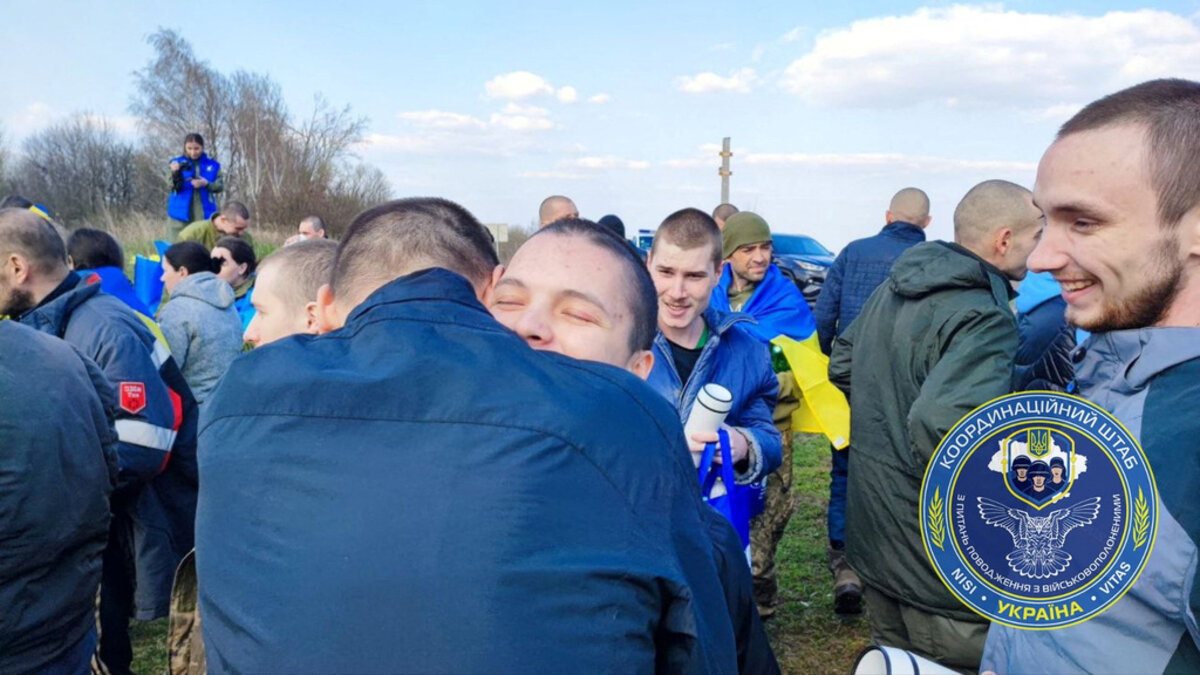
Russia and Ukraine rarely agree on much these days. Yet this week, after the release of two videos on social media that appeared to show Russian forces had beheaded three captured Ukrainian soldiers, the two countries seemed to find common moral ground. Each launched an investigation of the videos.
The Kremlin said they were “awful.” Russia’s Prosecutor General’s Office promised to verify their authenticity and then “make an appropriate decision.” Ukraine called on the International Criminal Court to investigate and opened its own war crimes probe.
The gruesome nature of decapitation – a brutality associated more with terrorist groups – may account for Russia’s apparent concern. The videos could push Russian opinion against the war and further unite the Ukrainian people. Such reactions would reaffirm the modern legal norms that wars must have humanitarian limits and that combatants in a conflict must protect civilians, the wounded, and prisoners of war.
Both Ukraine and Russia are among nearly 200 countries that are party to the Third Geneva Convention, the international law that dictates rules on the treatment of POWs. Yet Russia has largely ignored many of the Geneva Conventions since the invasion, especially in bombing civilian targets, executing civilians in captured towns, and taking Ukrainian children to Russia. Ukraine has committed similar atrocities but not nearly as many. And more importantly, it is investigating them.
Shocking violence can sometimes change the course of a conflict. The My Lai massacre of Vietnamese civilians by U.S. soldiers in 1968 shifted American opinion of the Vietnam War. In 2005, Al Qaeda told its branch in Iraq to stop its frequent beheadings. Videos of those acts were losing “Muslim hearts and minds,” said a leader of Al Qaeda. Many Islamic scholars also weighed in against such violence.
Beheadings during a war may be aimed at instilling fear, but they can also create a response that helps limit the war by affirming moral guardrails. That response is based on the presumed innocence and dignity of civilians or captured soldiers.
If the Kremlin does now seek to adhere to the rules of war, it would be a recognition that Russia must still exist within a moral community, one based on humanitarian law with the idea that what unites people is far stronger than what divides them. War needs limits because of the infinite good within humanity.

A Christian Science Perspective
Each weekday, the Monitor includes one clearly labeled religious article offering spiritual insight on contemporary issues, including the news. The publication – in its various forms – is produced for anyone who cares about the progress of the human endeavor around the world and seeks news reported with compassion, intelligence, and an essentially constructive lens. For many, that caring has religious roots. For many, it does not. The Monitor has always embraced both audiences. The Monitor is owned by a church – The First Church of Christ, Scientist, in Boston – whose founder was concerned with both the state of the world and the quality of available news.
Christ is here, now and always
- Quick Read
- Read or Listen ( 3 Min. )
-
By Kim Hedge
God’s healing message of love and truth is always at hand – wherever we may be.
Christ is here, now and always
I had just said goodbye to a friend who had come over for dinner and to hear stories of my recent Bible study tour in Israel and Jordan. One of the photos I’d shown her was of a sunset over the Sea of Galilee.
Then I looked out at the little lake in front of my apartment, over which the sun had just recently set, and the thought came, “It’s the same sun. Jesus looked at the exact same sun.” And in a flash of a moment, time and space meant nothing – 2,000 years and 6,000 miles just disappeared from thought. And then I realized that while Jesus wasn’t actually there with me, the Christ – divine Truth – is always present.
Mary Baker Eddy, the discoverer of Christian Science, explains in “Science and Health with Key to the Scriptures,” “... Christ is not a name so much as the divine title of Jesus. Christ expresses God’s spiritual, eternal nature. The name is synonymous with Messiah, and alludes to the spirituality which is taught, illustrated, and demonstrated in the life of which Christ Jesus was the embodiment” (p. 333). Christ is always with us, communicating God’s ever-active healing love and light.
It was a powerful moment, to feel that timeless presence, and it reminded me of a healing I’d had on the trip. About 10 days in, I became very ill. As I’ve always found helpful in these kinds of situations, I turned wholeheartedly to God. I prayed to know that as God’s child I was safe and cared for, and that God’s love was right there with me.
A friend on the trip prayed with me, helped with some practical needs, and even sang hymns to me with another friend, which was so helpful. But that night I woke up in the middle of the night, still struggling. I reached out to a Christian Science practitioner back home for Christian Science treatment. She reminded me of everyone’s inherent perfection as the reflection of God – not mortal and subject to illness but entirely spiritual, created in God’s image and likeness, as the Bible states.
Jesus healed by seeing and knowing what God sees and knows – the flawless, spiritual man and woman of His creating. And Science and Health tells us that such healing is not limited to a particular time or place: “It is not well to imagine that Jesus demonstrated the divine power to heal only for a select number or for a limited period of time, since to all mankind and in every hour, divine Love supplies all good” (p. 494).
It occurred to me that I’d been thinking I had somehow been separated from the healing power and presence of Christ. But as the Apostle Paul wrote, nothing can separate us from the love of Christ (see Romans 8:35-39).
I turned on the recording of my friends singing earlier. I listened to the hymns’ messages of God’s goodness, which is expressed in all of His children, and felt the love of those dear friends, which to me illustrated the heavenly love that Christ communicates to us. I felt the presence of Christ right there with me and fell asleep peacefully.
When I awoke in the morning, not only was I feeling much better, I was able to join the group for a 3.5-mile walking tour of the ancient city of Petra, Jordan. And let me tell you, walking out of the Al Siq Canyon into the space that opens up in front of the treasury was nothing short of magnificent. For years I’d wanted to visit this site, and it was even more special to be there with this kind and supportive group. In addition, I realized in that moment that I was completely healed!
As a much-beloved hymn states,
Till time and space and fear are naught
My quest shall never cease,
Your presence ever goes with me
And You do give me peace.
(Violet Hay, alt., “Christian Science Hymnal: Hymns 430-603,” No. 501, © CSBD)
We can all feel the great love and peace of God and the healing power of the Christ – no matter where we are.

Viewfinder
Arrayed in glory

A look ahead
Thank you for joining us. Please come back Monday, when we look at the defamation lawsuit brought by Dominion Voting Systems against Fox News.



